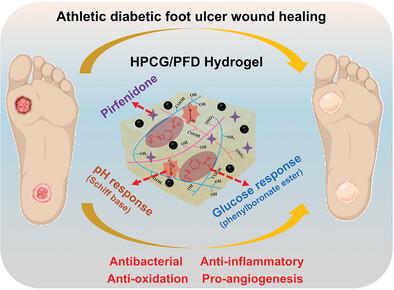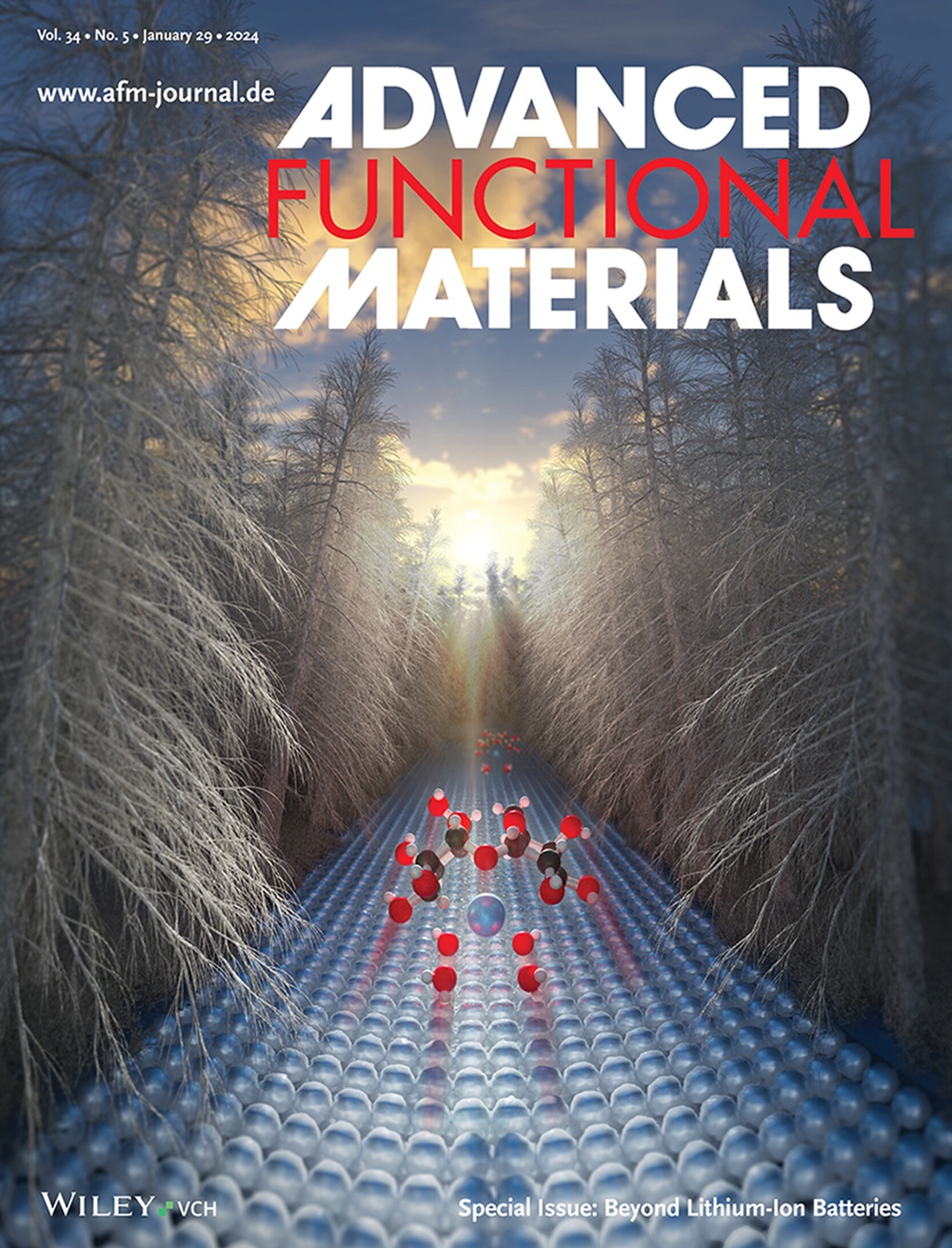Photothermal/Photodynamic Synergistic Antibacterial Hydrogel Dressing with pH/Glucose Dual Responsive Pirfenidone Release for Diabetic Foot Ulcers
IF 18.5
1区 材料科学
Q1 CHEMISTRY, MULTIDISCIPLINARY
引用次数: 0
Abstract
Diabetic foot ulcers (DFU) are notoriously challenging to heal due to severe infection, excessive inflammation, and difficulty in angiogenesis. In response to these problems, first, a pH/glucose dual-responsive hydrogel dressing (HPC) is constructed using dual dynamic crosslinking through Schiff base and phenylboronate ester between m-aminophenylboronic acid and adipic dihydrazide bifunctionalized hyaluronic acid (AHP) and oxidized chondroitin sulfate (OCS). Then, polydopamine-reduced graphene oxide compounded glycine-modified fullerene (GPC) with photothermal/photodynamic synergistic antibacterial properties and the drug pirfenidone (PFD) with pro-angiogenesis and suppress inflammatory are loaded into the above HPC hydrogel. Based on the response of Schiff base/phenylboronate ester to pH/glucose, the HPC/GPC/PFD (HPCG/PFD) hydrogel can accelerate the release of PFD, thereby improving excessive inflammation and angiogenesis in DFU. In addition, dual dynamic crosslinking provided the hydrogel with good on-demand removal and self-healing performance, while GPC brought good tissue adhesion, antioxidation, and electrical conductivity to the hydrogel. The rheology, morphology, mechanical properties, swelling, degradation, and biocompatibility of the hydrogel have been well verified. Finally, in the DFU model of rats, this hydrogel can promote wound repair by reducing infection and inflammation, accelerating wound closure, and enhancing epidermal regeneration, collagen deposition, and angiogenesis, showing promoting effect on diabetic wound healing.

具有 pH 值/葡萄糖双响应吡非尼酮释放功能的光热/光动力协同抗菌水凝胶敷料用于治疗糖尿病足溃疡
糖尿病足溃疡(DFU)因感染严重、炎症过度和血管生成困难而极难愈合。针对这些问题,首先,通过间氨基苯硼酸与己二酸二酰肼双官能化透明质酸(AHP)和氧化软骨素硫酸盐(OCS)之间的席夫碱和苯硼酸酯的双重动态交联,构建了一种 pH/ 葡萄糖双响应水凝胶敷料(HPC)。然后,将具有光热/光动力协同抗菌特性的聚多巴胺还原氧化石墨烯复合甘氨酸修饰富勒烯(GPC)和具有促进血管生成和抑制炎症的药物吡非尼酮(PFD)负载到上述 HPC 水凝胶中。基于希夫碱/苯硼酸酯对 pH 值/葡萄糖的反应,HPC/GPC/PFD(HPCG/PFD)水凝胶可加速 PFD 的释放,从而改善 DFU 过度炎症和血管生成。此外,双重动态交联使水凝胶具有良好的按需去除和自愈性能,而 GPC 则为水凝胶带来了良好的组织粘附性、抗氧化性和导电性。水凝胶的流变性、形态、机械性能、溶胀、降解和生物相容性都得到了很好的验证。最后,在大鼠 DFU 模型中,该水凝胶可通过减少感染和炎症、加速伤口闭合、促进表皮再生、胶原沉积和血管生成来促进伤口修复,显示出对糖尿病伤口愈合的促进作用。
本文章由计算机程序翻译,如有差异,请以英文原文为准。
求助全文
约1分钟内获得全文
求助全文
来源期刊

Advanced Functional Materials
工程技术-材料科学:综合
CiteScore
29.50
自引率
4.20%
发文量
2086
审稿时长
2.1 months
期刊介绍:
Firmly established as a top-tier materials science journal, Advanced Functional Materials reports breakthrough research in all aspects of materials science, including nanotechnology, chemistry, physics, and biology every week.
Advanced Functional Materials is known for its rapid and fair peer review, quality content, and high impact, making it the first choice of the international materials science community.
 求助内容:
求助内容: 应助结果提醒方式:
应助结果提醒方式:


